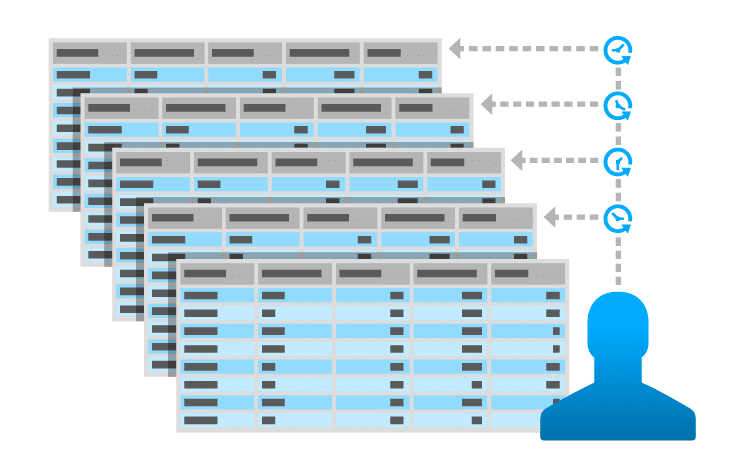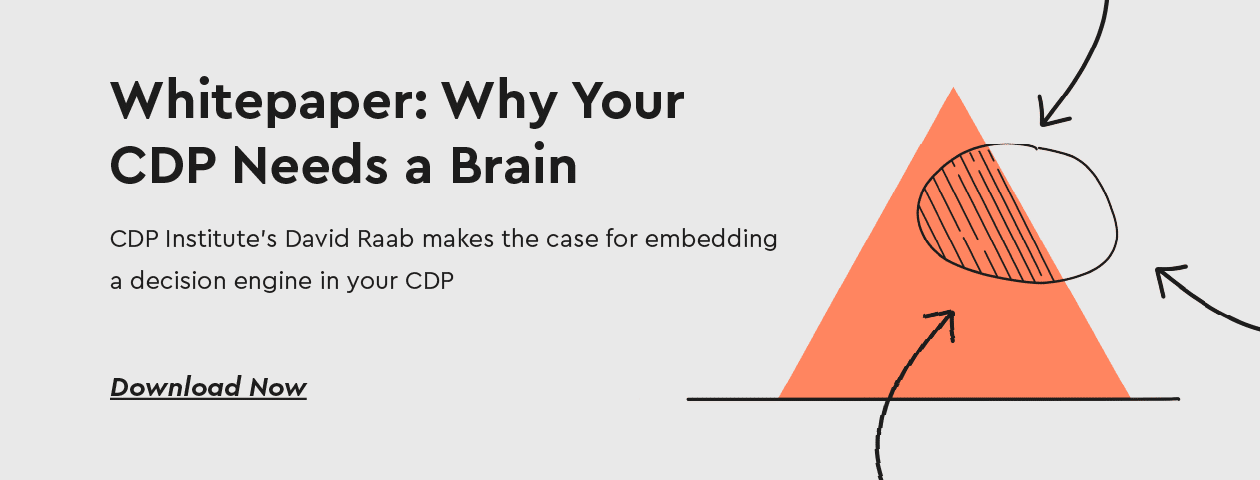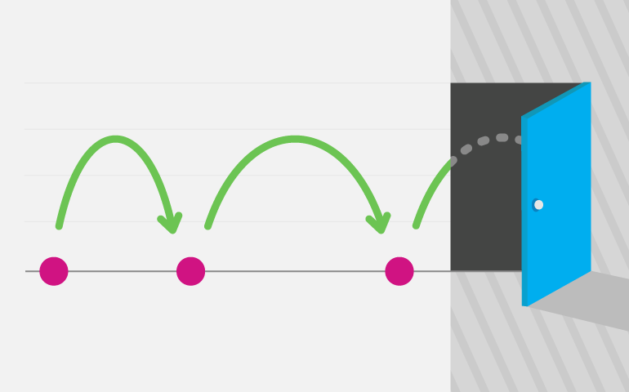What is a Single Customer View?
A single customer view is a self-contained, unified and continuously up-to-date aggregated database of all the information it has about all its customers. A single customer view is an essential component that enables organizations to understand and interact with each customer in the most personalized and effective ways. It also makes it much easier for marketers to segment and analyze their customers, based on patterns in demographics and behavior, in order to gain insights that can help with improving future customer acquisition and retention strategies. Finally, it helps organizations improve strategic decision-making, operating efficiencies and customer service.
Your options for CDP-led orchestration.
Ideally, the single customer view – also known as a 360-degree customer view or flat customer tables – is a complete and accurate picture of each customer and his or her interactions with the company. This includes all relevant data pertaining to the customer, including all transactional and historical activity data, campaign response data, history of interactions with the company (across all channels and touchpoints), original acquisition channel, demographics data and any other data points available to the company.
Watch the 2-minute mini-workshop or read the transcript here.
A Necessity for Effective Personalization
Many customers have come to expect that the companies with which they interact understand them, their preferences and their individual characteristics. Effectively personalizing interactions with individual customers requires a complete and unified view of each customer, how they behave and how they interact with the brand. Having a single customer view is thus an essential building block for achieving a high degree of personalization.
On the flip side, most consumers have become intolerant to the bombardment of mass marketing coming from every website, store or app with which they have interacted. Instead of encouraging engagement and improving brand perception, generic marketing to large swatches of one’s customer base leads to brand fatigue at best, and outright negativity at worst.
Especially in organizations that engage with customers through multiple channels, it is critical to aggregate all available data, from all those channels, in one place. For example, sending a customer an offer to buy a particular product on a website, days after the same customer already bought that product from a brick-and-mortar store will not leave the customer feeling understood.
Customers expect all interactions to reflect a consistent understanding of their history and preferences, something that is only possible using predictive customer modeling, based on a well-structured, always-updated 360-degree customer view.
Snapshot versus Timeline Single Customer Views
Most implementations of a single customer view maintain a single version of the flat customer tables, always updated with the latest available customer data. This “snapshot” approach is sufficient for many purposes, although there are times that companies will want to be able to look at how a customer has changed over time. One prime example is for the use of predictive customer modeling and analytics technologies.
Predictive analytics solutions for customer marketing need to be able to go back and analyze many previous customer data snapshots in order to detect changes and trends in behavior over time. This “timeline” approach means that the system needs to hold all the data for each customer for each distinct time period (typically, per day, although weekly and monthly tables are also commonly used), going back months or years. The following image illustrates the timeline approach:

The advantage of using predictive analytics-based marketing systems is the ability to provide far more emotional intelligence when interacting with customers. Predictive models are excellent at determining, for example, which offers and incentives are most effective at motivating each individual customer (or customer persona) to spend more, to remain engaged longer and even to re-engage after churning.

Challenges in Achieving a Single Customer View
In almost every company, information about customers is spread across many different applications and databases. Typical examples include CRM, marketing, loyalty program, customer support, website/app activity tracking, social media management and financial/accounting systems. This siloed-data reality makes it very difficult to efficiently consolidate all information about individual customers into a single, unified repository.
Beyond the required data flows to bring all this data together from multiple systems, unifying information about individual customers requires some kind of common identifier. While one might think that a name, phone number or email address can be used to address this need, there are two main problems with this assumption:
- Different systems use different, non-shared identifiers – For example, an email marketing system might use an email address, while the accounting system uses a phone number, CRM is based on a unique customer ID and the website activity tracking system uses a cookie ID.
- Data quality errors hinder accurate matching – Even when multiple systems use the same identifier, small differences in the way the identifier is recorded in each system often makes it impossible to uniquely match records across systems. Common examples are different spellings of names, mobile versus home telephone numbers, and work versus personal email addresses.
The implications of this reality are that a big part of the challenge involves what is known as “data quality.” Companies need tools that are able to cleanse, match, enrich and unify disparate customer data records into a true single view of each customer.
Whitepaper: Why Your CDP Needs a Brain
CDP Institute’s David Raab makes the case for embedding a decision engine in your CDP
Other Benefits of Having a Single Customer View
Beyond the personalized-marketing benefits already discussed, organizations enjoy additional benefits from having a single customer view repository. These include the ability to:
- gain better customer insight and track more accurate metrics, allowing for better marketing efficiency and strategic decision-making
- understand customer journeys across all channels (e.g., better conversion attribution)
- minimize the costs associated with low-quality data and ineffective marketing tactics
- improve customer service across all touchpoints
- improve communication, cooperation and business processes between traditionally separate teams

Leverage a Single Customer View for Personalized Customer Marketing
Optimove is a Relationship Marketing Hub that combines the most advanced customer modeling and predictive analytics technologies with an automated customer marketing orchestration platform. A core aspect of the system is its ability to create and maintain a timeline-based single customer view. The software helps marketers implement a systematic approach to planning, executing, measuring and optimizing a complete, highly personalized customer marketing plan.
Request a Web demo to learn how you can use Optimove to automate a complete system of highly personalized customer marketing activities that increase long-term customer loyalty and lifetime value.
Get a personalized tour of Optimove
Let us show you how to go from tens to hundreds of segments


